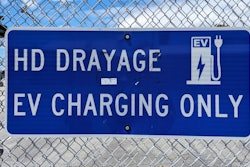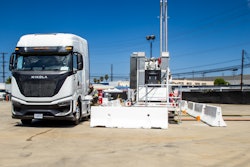The need to incorporate electronic vehicles (EVs) into fleets continues to gain traction, spurred by a variety of factors, including climate change, regulatory pressure, the intrinsic value of EV technology and a broad societal shift. While EVs can deliver significant business value and contribute to the reduction of carbon emissions, wholesale replacement of legacy vehicles with EVs is neither feasible nor strategic. There are smarter ways to overhaul fleets.
Navigating emissions targets and the path to sustainability
Reducing carbon emissions is integral to the global effort to slow or counteract the effects of climate change and for industries to meet their ESG goals. With transportation being a significant contributor to these emissions, the automotive, fleet, and logistics industries face increasing regulatory pressures. Whether driven by Net-Zero targets or guided by internal ESG goals, all stakeholders have a role to play in this transition.
However, the pressure from industry influence and regulatory mandates can sometimes lead to hasty decisions, pushing fleets towards overhauls without fully understanding the long-term consequences. While striving for a more sustainable transportation sector is both essential and commendable, it's crucial to approach fleet updates sustainably and strategically. Fleet businesses need not be sacrificed in the pursuit of meeting 2030 ESG targets and beyond.
EV technology offers promising benefits, including improved overall efficiency and eventual reductions in operating costs. However, the initial investment required for electric vehicles is substantial, making a rip-and-replace strategy untenable. A gradual upgrade approach can meet regulatory requirements and ESG objectives without compromising the business integrity of fleets. Even with a phased transition, strategic planning is vital. Fleet managers are increasingly prioritizing tools that help them identify the most suitable internal combustion engine vehicles for replacement, ensuring a smooth and effective transition to a greener future.
AI’s role in reducing emissions
AI can play both a direct and indirect role in helping fleet managers meet emissions reduction targets. As mentioned in the previous section, identifying combustion engines as candidates for replacement is important for a strategic, gradual overhaul. AI can streamline that process by evaluating the performance of engines across the fleet over time and determining what engines are performing least efficiently and which are closest to end-of-life, thereby enabling fleet managers to optimally upgrade to EVs.
Beyond optimizing EV implementation, AI can enhance fleetwide efficiency. Consider the environmental variables that affect driver performance and efficiency: road width, incline, curvature, congestion levels, remoteness, and a range of weather conditions. AI-powered solutions can help drivers navigate these variables more effectively.
AI can identify driver tendencies and provide insights by analyzing historical data collected from dashboard cameras, external cameras, vehicular sensors, incident and event reporting, etc. These solutions can build a driver profile that indicates whether, for instance, a driver tends to accelerate or decelerate abruptly in urban areas. This behavior not only poses safety risks and increases insurance premiums but also consumes more fuel. While one underperforming driver may not significantly impact a fleet, dozens or hundreds of drivers with such tendencies could substantially affect fleet efficiency, which in turn could impact engine lifespan and EV replacement scheduling.
AI-assisted video coaching solutions can leverage this data to create teachable moments for enhanced safety. For example, if a driver rear-ends a vehicle due to tailgating, an AI-powered dashcam can determine if the driver was distracted, such as using their phone or eating while driving and prevent accidents. A central fleet management system may then be alerted to the event. Armed with a driver’s profile, behavioral tendencies, and the context of this specific event, a fleet manager has a prime opportunity to improve this driver’s long-term performance. Over time, drivers fleetwide can systematically learn from their mistakes and tendencies. Better drivers result in a more efficient and safer fleet.
As these AI-powered fleet management solutions continue to evolve, we’ll see more predictive capabilities. The central fleet management system will be able to make recommendations for driver deployments on specific routes based on driver profiles and engine/vehicle profiles to optimize routes and driver performance.
Optimizing the present while working toward the future
Fleets should take a strategic approach to EV rollout while using smart solutions to maximize the value of existing assets. This way, fleets can improve systems, training, and driver performance—a feat that will benefit them now and in the future, regardless of their current stage in the EV overhaul. EVs are key to the future success of fleets, but they don’t have to come at the expense of the present.














